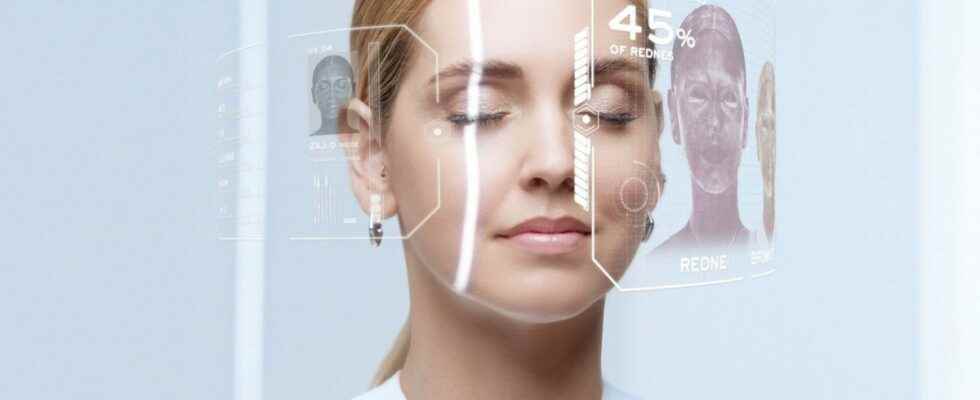Posted ,
Reading 4 mins.
L’Oréal participated in the sixth edition of VivaTech with a 325 square meter stand dedicated to new immersive beauty experiences developed by its main brands. On this occasion, Camille Kroely, Director of Open Innovation and Digital Services, deciphers what will be the beauty of the future, at the crossroads between science and technology, and lifts the veil on the innovations that are about to disrupt our beauty routine. Interview.
Does L’Oréal’s presence at VivaTech mean that beauty and technological innovation are now inseparable?
Technological innovation is the ally of tomorrow’s beauty. At L’Oréal, we are convinced that innovation is at the crossroads between science and technology, and this is precisely what we are presenting at VivaTech. Innovation is at the heart of our DNA… At the start with science, and today by bringing together science and technology in order to offer enhanced beauty.
How can technologies shape the future of beauty?
Today, technologies make it possible to respond to consumer expectations with just one click. Throughout their beauty journey, our customers have access to services that bring them precision, such as virtual make-up try-ons via artificial intelligence, but also tailor-made advice, such as with the Shade Finder. from Lancôme, which makes it possible to find the right shade of foundation, or even personalized skin diagnostics in store with Skin Screen and at home with E-youth Finder. These innovations allow you to discover your adapted beauty routine with a degree of precision never seen before. Technology offers unlimited possibilities for personalization.
Among the innovations presented at VivaTech is the “Scent-Sation” by Yves Saint Laurent Beauté, which allows the public to find the fragrance that best reveals their emotions. Has personalization become essential to seduce consumers?
Scent-Sation is a one-of-a-kind immersive experience that uses a connected headset to assess consumers’ emotional responses to different families of scents to help them find the perfect scent. The need for personalization has always existed, and technology offers a tailor-made answer to the consumer, with hitherto unequaled precision.
The group’s brands are also making first forays into the metaverse with NFTs and immersive experiences. Is this a must?
At L’Oréal, the metaverse is a unique field of exploration and innovation to create engagement with a new generation of consumers. The beauty of the future will be physical, digital and virtual. We therefore approach it with a ‘test and learn’ approach to identify possibilities in order to enrich the consumer journey which is constantly evolving, moving from an ‘Online to Offline’ approach to an ‘Online to Offline to On-Chain’.
What possibilities could the metaverse offer to the group’s luxury and consumer brands?
The metaverse offers many possibilities. Among them, the possibility of engaging communities and promoting diversity. For example, the NYX Professional Makeup brand accompanies the next generation of artists by launching the first label of 3D beauty creators to design the beauty codes of tomorrow. As part of this launch, NYX has partnered with People of Crypto Lab (POC) on The Sandbox platform and made available 8,430 NFT avatars representing all diversities. For its part, Yves Saint-Laurent launched 10,000 NFTs to unlock unique and personalized experiences and services in the YSL Beauty ecosystem.
With SkinCeuticals Pro 1:1, L’Oréal offers a personalized – and free – diagnosis of the skin to benefit from a tailor-made routine. Is the virtual also the future of dermatological care?
Knowing the needs of your skin and the most suitable associated product routine is a very strong expectation that has always existed. Today, thanks to new technologies, we allow consumers to access a level of advice and recommendations in one click, wherever they are. At L’Oréal, we are seeing an exponential demand for skincare which is now experiencing strong growth. We must respond to this by combining beauty products and services in order to offer consumers the best possible experience.
Will all these technological innovations also be deployed in physical stores?
This is the strength of what we are presenting today: a fluid beauty journey that offers the best of our recommendations and our diagnoses thanks to devices accessible in stores. Lancôme uses artificial intelligence to offer Skin Screen, an advanced skin diagnostic service, provided free of charge in stores by a beauty advisor from the brand. This service makes it possible – with the help of an innovative device taking pictures of the face using tripolar light technology – to offer the best high-resolution diagnosis. The Skin Screen uses artificial intelligence to compare images with our Skin Aging Atlas database of over 15,000 images, and brings together over 20 years of data and clinical trial assessment expertise to analyze 13 skin health parameters, including hydration, texture, UV damage, dark circles.
Are technologies also used to serve more responsible beauty?
At L’Oréal, we have identified many revolutionary technologies for more responsible beauty. The L’Oréal Water Saver offers a hair washing experience that reduces water consumption by 61% compared to standard methods; which will represent billions of liters of water each year. Trying on virtual make-up is also very effective in preserving the environment. When a consumer uses it, we observe up to -17% in the return rates of our products because the customer was able to try it upstream; which also allows us to reduce our carbon footprint.
What will beauty look like at L’Oréal in 10 years?
In 10 years, beauty at L’Oréal will always be more responsible, more inclusive, and at the crossroads of science and technology.
